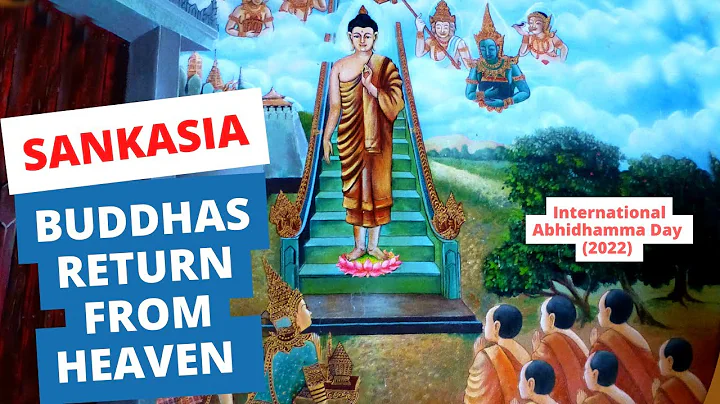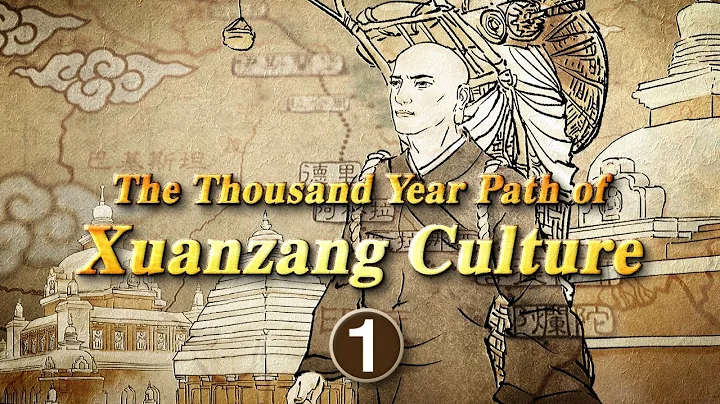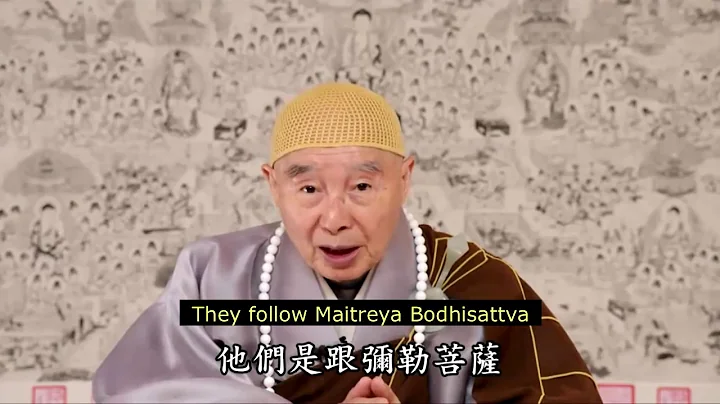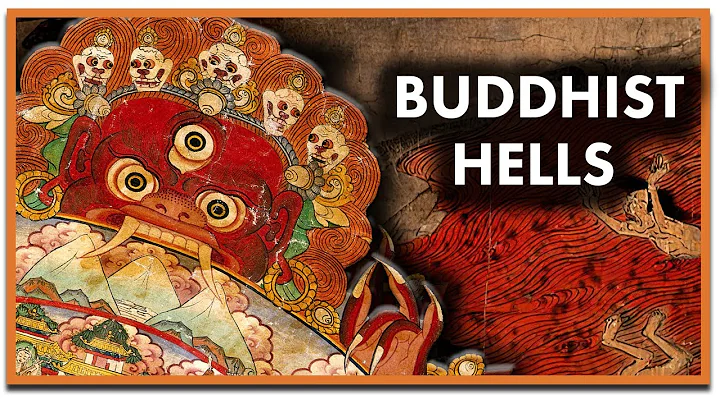
When Buddhism was first introduced to Mount Wutai and temples were built, there are five theories recorded in historical documents and studied by contemporary scholars. They are arranged in chronological order, namely the time of "King Mu of Zhou", the Western Han Dynasty, the Eastern Han Dynasty, the Eastern Jin Dynasty and the Northern Wei Dynasty.
Looking at it now, at least the statement that there was a Buddhist temple in Mount Wutai during the reign of King Mu of Zhou Dynasty is pure fiction. This statement was first seen in "Ji Shenzhou Sanbao Gan Tong Lu" written by the eminent monk Daoxuan of the Tang Dynasty: "Lawyer Daoxuan often asked the heavens: 'When did the Buddha Dharma come here, and where is the holy Taoist place in the territory?' The name of the sky is Xuanchang. The answer is: "During the time of King Mu of Zhou Dynasty, there were already sound teachings here. Manshu lived in Qingliang Mountain, and King Mu built a temple in it to worship him." Master Miaoji, the head of the Dahuayan Temple in Wutai Mountain in the Northern Song Dynasty, established the temple in 1059 (Jiayou IV). This statement was cited in the "Guang Qing Liang Zhuan" re-edited in 1596 (the 24th year of Wanli) and the "Qing Liang Shan Zhi" written by Salmon Zhencheng of Guangying Temple in Yanshan in the Ming Dynasty. According to historical records, the legendary reign of King Mu of Zhou was between 1001 BC and 946 BC. Shiying Muni had not yet been born and Buddhism had not yet been established. This theory is obviously fiction and conjecture. So both Miaoji and Zhencheng quoted this statement, do they confirm that it is historical? Not so. Zhencheng made it clear in "Qingliang Mountain Chronicles": Regarding the ancient "emperors' worship of Jian", "a few items are briefly recorded today, and the prosperity of Manjusri is highlighted". The main purpose is to promote Manjusri's belief and retain this statement. He What we really believe is that "since the founding of the Han and Ming Dynasties, the Holy Lord Ming and King Chongjian have been on behalf of Chongjian."
About the Western Han Dynasty, it can be found in "Qingliang Temple Stele in Mount Wutai" written by Li Pa, a famous writer in the Tang Dynasty and former governor of Beihai County. : "(Qingliang Temple) During the Yan-Han Dynasty, an arrow in the divination led me to build Qingliang Temple. During the Northern Qi Dynasty, I used taxes from eight states to support my apprentice." "Yan-Han" refers to the Western Han Dynasty created by Liu Bang. However, Chinese historians, Buddhist historians and most Buddhists believe that Buddhism had not been introduced to China before the Eastern Han Dynasty. If this is the case, then the temples built in the Western Han Dynasty in Mount Wutai are obviously not credible.
The most widely circulated saying in the past dynasties after the Tang Dynasty and still deeply rooted in people's hearts today is that Buddhist temples were first built in Mount Wutai during the Yongping period of the Eastern Han Dynasty. This statement first came from Daoxuan's "Gantong Lu". It is recorded in the book: "... Thirty miles down from the southeast of Taifu, there is the ancient Dafu Lingqu Temple. There are two monasteries in the east and west, and Buddhist services are well prepared. Ancient records say it was built by Emperor Ming of Yunhan." It is also recorded: Lawyer Xuan People who asked the sky said: "Twenty miles southeast of the central platform of Wutai Mountain, there is the Dafu Linglu Temple. The two halls are separated by a stream, which is still there today... No one knows its origin. It may have been built by Emperor Ming of Yunhan, or it is said that It was written by Wei Xiaowen, but there are different opinions, so what?" Heavenly Man replied: "The two emperors both built temples here to provide support, and King Asoka also built pagodas here." "Guangqing Liangzhuan" recorded by Miaoji of the Northern Song Dynasty: "At the beginning of the Han and Ming Dynasties, Mo Teng's celestial eye also saw a pagoda, and persuaded Chang (Emperor) to build a temple, named it Dafu Lingqu. Those who preached and preached believed in Buddhism. The emperor believed in Buddhism and built a temple to persuade people, and named it Dafu. Also, this mountain shape and its Tianzhu Lingqu were named Dafu. The mountains are similar, so they are named Yan. Xiaowen of the Yuan and Wei Dynasties was not far from Beitai, and he was thirsty all year round." Zhencheng of the Ming Dynasty's "Qingliang Mountain Chronicles" is more specific. Volume 3 says: "Emperor Xiaoming of the Han Dynasty in the first month of the seventh year of Yongping... ...sent Wang Zun and other eighteen people to visit the west, and Zhi Teng and Lan (Moteng and Flan) returned to the Han Dynasty. They arrived in Luoyang in Dingmao, the tenth year of Yongping...The emperor asked: 'Is there no saint living in this land? ?' Opposing the sun: 'There is Mount Wutai in this land, where the great master Manjusri lives...' Next spring, I will pay homage to Qingliang Mountain and go back to the Qingliang Mountain, and I will tell the emperor to build Jialan... and then dozens of monks will live there." Another five clouds: " In the tenth year of Yongping reign of Emperor Ming of the Later Han Dynasty, two Venerables, Mo Teng and Flan, came to the west and saw with their discerning eyes that Qingliang Mountain was the transformed universe of Manjushri. There was a Buddha relic stupa built by King Ashoka in it. King Ashoka... made forty-eight thousand Buddha relics. It is hidden in thousands of pagodas and scattered in Yanfu, and there is one in Wutai Mountain. The emperor built the temple, and it was called 'Dafu Lingqu Temple'. Dafu means Hongxin, and the emperor began to believe in Buddhism, so it was named Yan." It is also recorded: "Emperor Xiaowen of the Yuan and Wei Dynasties rebuilt the Dafu Lingqu Temple, surrounding the Zaul Peak, and built twelve courtyards." According to this, the Wutai Mountain Temple was built in 68 AD (the eleventh year of Yongping in the Eastern Han Dynasty). The "New Records of Qingliangshan" compiled by Lao Zangdanba in 1694 (the 33rd year of Kangxi) and the "Records of the Holy Land Qingliangshan" compiled by the third Zhangjiaruobi Duoji published in 1831 (the 11th year of Daoguang) both used this method. Say it and make it spread wider.
The famous scholar Gu Yanwu (1613^ 1682) during the Ming and Qing Dynasties took a negative attitude towards this statement in his "Records of Mount Wutai": "I have examined that Mount Wutai was called Liuhu County in the Han Dynasty, and the name of the mountain first appeared in Qi. The construction of the Buddhist temple was probably in the Later Wei Dynasty, and those who taught there thought that She Moteng came here from Tianzhu and lived in this mountain. I didn’t know that the Qingliang Terrace with the image of Xiaoming in the Han Dynasty was in Luoyang and not here."
The beginning of Wutai Mountain in the Northern Wei Dynasty The theory of building a temple is not Gu Yanwu’s speculation. It can be found in the earliest biography of Wutai Mountain, the "Ancient Qingliang Biography" written by Huixiang, a monk named Langu in the Tang Dynasty in 680 (the first year of Yonglong). The biography clearly records several of the oldest temples in Mount Wutai, including Foguang Temple, Qingliang Temple, Dafutu Temple was built by Emperor Wen of the Yuan and Wei dynasties. The book "Records of the Dharma-Seeking Pilgrimage to the Tang Dynasty" written by the great Japanese monk Ennin said: "This Wutai Mountain is called Qingliang Mountain. The temples built in the mountain are the first ones, so they are named Qingliang Temple." In short, regardless of whether the original temple in Wutai Mountain was large Both Futu Temple and Qingliang Temple were built during the period of Emperor Xiaowen of the Yuan and Wei Dynasties, that is, from 471 to 499.
Some contemporary scholars believe that the successors of Buddhism to Wutai Mountain should be after the Eastern Han Dynasty and the Northern Wei Dynasty, based on the history of Buddhism gradually expanding its spread in Shanxi after it was introduced to China and the records of Shi Daoan and Huiyuan in "The Biography of Eminent Monks" written by Shi Jiaoran. Before that, that is, in the early Eastern Jin Dynasty, around 353 AD. Cui Zhengsen, a researcher at the Academy of Social Sciences of Shanxi Province, said in the first chapter of "The Origin of Buddhism in Mount Wutai" of "History of Mount Wutai Buddhism": "In the fifth year of Yongjia (311), the fifth year of Emperor Huai of the Western Jin Dynasty, the Buddha's image was painted in white stone at the Baishi Temple in Zhongtiao Mountain (now Yongjia). Ji City). Buddhism has spread in the southwestern part of Shanxi. In addition, the Jia family in Yanmenlou also became a monk during the Five Hus and Sixteenth Kingdom, and his Dharma name was Taoism. Later, in the late Taiyuan year of Emperor Xiaowu of the Eastern Jin Dynasty (396), he came to the capital to build Kang He Hou Temple studied the Vinaya and passed away at the age of 78. This shows that Buddhism had spread throughout Shanxi in the Later Zhao Dynasty.
In the third year of the reign of Emperor Fu Jian of the former Qin Dynasty (353), Daoan founded a temple and pagoda in Hengshan, Taihang, and gathered people He preached and opened the Buddhist dojo in Mount Wutai. ... Brothers Huiyuan and Huizhi shaved their heads, worshiped An as their teacher, became a monk here, and studied the Dharma."
"Taihang Hengshan" is in Quyang, Hebei today, in Mount Wutai. At the eastern foot of Mount Wutai. In addition, "History of Buddhism in Mount Wutai" also quoted records from Guangxu's "Tongzhi of Shanxi": "(Heng County) Loufan Temple...Jin Huiyuan's teaching place"; "(Dai County) Bairenyan Temple, Jin Huiyuan built a stone house and built towers, terraces, corridors, gates, monks' pavilions, and monks' houses, so the stele still exists." The article quoted these historical materials to explain that in the early years of the Eastern Jin Dynasty, General Shi Daoan Buddhism was introduced to the Mount Wutai area, and his disciple Huiyuan was also one of the first eminent monks to spread Buddhism to the Mount Wutai area.
![[Live] An Interfaith Dialogue with VenerablePomnyun Sunim and Rev Rich Tafel - DayDayNews](https://i.ytimg.com/vi/6-AdXBXRQ84/hq720.jpg?sqp=-oaymwEcCNAFEJQDSFXyq4qpAw4IARUAAIhCGAFwAcABBg==&rs=AOn4CLAiHVhNOfatMQbkn9dLpkoNmY5Znw)
![[Live] An Interfaith Dialogue with VenerablePomnyun Sunim and Rev Rich Tafel - DayDayNews](https://cdn-dd.daydaynews.cc/img/play.svg)
![[English CC Sub] Practicing Mere Consciousness is the Start of a Happy Life 2, by Ven Guan Cheng - DayDayNews](https://i.ytimg.com/vi/aNNnFdioc3Y/hq720.jpg?sqp=-oaymwEcCNAFEJQDSFXyq4qpAw4IARUAAIhCGAFwAcABBg==&rs=AOn4CLD3jp7MOCf8aazDsPmJYbttT1kQdQ)
![(Eng. sub) [ The Sutra Story 1 | Upali's Becoming a Monk ] - DayDayNews](https://i.ytimg.com/vi/hC4fvvtHrcI/hqdefault.jpg?sqp=-oaymwEcCOADEI4CSFXyq4qpAw4IARUAAIhCGAFwAcABBg==&rs=AOn4CLCi2z0vwg5BwVLvunAFPJuFUeWOtA)

![[English] Who Am I - Lecture 1 - Ven. Guan Cheng - DayDayNews](https://i.ytimg.com/vi/KU0fUs2It5o/hq720.jpg?sqp=-oaymwEcCNAFEJQDSFXyq4qpAw4IARUAAIhCGAFwAcABBg==&rs=AOn4CLDFpQUN_QwRfC7bmP4sUadq-RcYdg)


![[Eng Sub]山西太原晋祠,不仅有三宝还有三绝,圣母殿里供奉的究竟是谁?|Shanxi Taiyuan Jin Temple - DayDayNews](https://i.ytimg.com/vi/RSO6pWXgOwE/hq720.jpg?sqp=-oaymwEcCNAFEJQDSFXyq4qpAw4IARUAAIhCGAFwAcABBg==&rs=AOn4CLC7XGMDZxXLSqGJ6VqVd61YO5NovQ)








![A Moving Masterpiece 清明上河图 [English narration] - DayDayNews](https://i.ytimg.com/vi/kxff-4GktOI/hqdefault.jpg?sqp=-oaymwEcCOADEI4CSFXyq4qpAw4IARUAAIhCGAFwAcABBg==&rs=AOn4CLBtHGLeUpJNCYDJYnZTuISQ1N5Vag)


